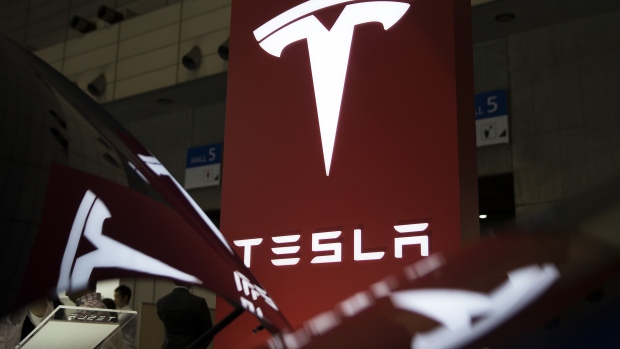Aug 31, 2020
Tesla and Apple surge after stock splits become effective
, Bloomberg News

If luring a broader constituency of mom-and-pop investors to their shares was the motive behind the stock splits by Apple Inc. and Tesla Inc., it’s working. At least going by first-day returns.
Already plumped up by giant rallies in 2020, both stocks popped again Monday, supassing record highs after the corporate actions took effect. While splits change neither a company’s underlying economics or the intrinsic value of their shares, investors took them as occasion to do what they have almost always done this year -- buy -- adding more than US$100 billion combined to their market values.
The share prices of both companies have soared in recent months -- with Tesla advancing 496 per cent this year and Apple adding 76 per cent. Apple is now the only publicly listed U.S. company with a market capitalization over US$2 trillion, while Tesla -- an electric vehicle maker that aims to deliver just about half a million cars this year -- has overtaken major corporations such as Walmart Inc., Visa Inc. and Johnson & Johnson. Tesla’s current valuation is about US$464 billion, while General Motors, which delivered 2.9 million vehicles in the U.S. in 2019, is worth about US$42.4 billion.
“We believe the stock split decision was a smart move by Tesla and its board given the parabolic move in shares over the past six months, with another stock split by Apple and likely other larger tech stalwarts will follow this same path over the coming months in our opinion,” Wedbush analyst Dan Ives wrote.
After closing north of US$2,000 Friday, Tesla shares surged to roughly US$500 following a 5-for-1 split. Nearly 115 million shares had changed hands on Monday.
A similar phenomenon happened with Apple after a 4-for-1 split that also took effect Monday. The iPhone maker had traded for more than US$500 a share, a price tag so great it came to represent 12 per cent of the Dow Jones Industrial Average. That fell below 3 per cent in the price-weighted index on Monday with Apple at around US$129 a share.
Apple shares closed up 3.4 per cent to US$129.04 Monday, while Tesla added 13 per cent to US$498.32.
Evercore ISI analyst Amit Daryanani sees the narrative for Apple “getting better” as the year progresses, helped by a “multitude of tailwinds” that include strong demand for its phones, as well as laptops and tablets as schools restart and consumers upgrade to newer devices.
For Tesla, the next major catalyst for shares will be its much-anticipated “Battery Day” on Sept. 22, followed by third-quarter delivery figures, Ives said.








